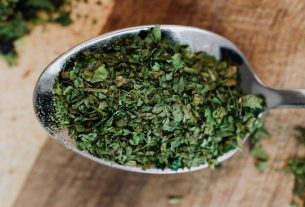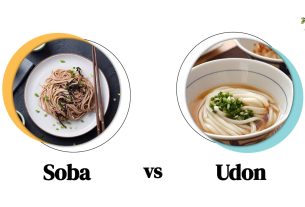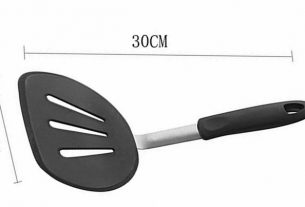Broccoli and cauliflower have different similarities and differences, some of these differences are white and black, or we could say white and green. You might be surprised by some of them. Usually, broccoli and cauliflower are served interchangeably or together in several meals in many homes and that makes it odd to say one without having thoughts concerning the other at least.
There are a series of differences between broccoli and cauliflower, apart from their color with cauliflower off-white and broccoli dark green, broccoli has slightly higher nutrients than cauliflower. The primary difference can be found in the taste, broccoli tastes more “green” while cauliflower tastes mildly sweet. Both of them are cruciferous vegetables, they belong to the same plant family.
Broccoli and Cauliflower: Cruciferous Vegetables
Family of cruciferous vegetables belongs to the edible plants whose name was gotten from the term crucifix and this was obviously because they resemble a cross. It is possible that you feel cauliflower or broccoli are not cross-shaped, however, when you check out radishes, sprouts, Brussels, arugula, kale, cabbage, and some others, they all are considered cruciferous.
Many of them are similar nutritionally, most are rich in fiber, folate, and vitamins K, C, and even E. They also all have very low calories, making them powerful for weight loss. According to researches, though it is yet to be confirmed by science, eating cruciferous vegetables helps with the reduction of most kinds of cancer. It is part of the reasons their popularity has risen recently.
The Family Brassica
The label cruciferous has begun to be overpowered by Brassica and this is because it is not all the vegetables that are classified cruciferous that have the feature “four-sided florets” which in the original sense they were named for. There are two different scientific families the category has been broken down into:
- Brassica rapa: Field mustard, bok choy, rapini, Chinese cabbage, turnips, and many other types.
- Brassica oleracea: Kohlrabi, kale, collard greens, cabbage, cauliflower, broccoli, and many other types.
What is Cauliflower and Its Benefits
When you want to describe cauliflower, it can be described as a white, dense florets ball that has a mild flavor, or sometimes it could be a sweet flavor. The flavor is very much different from that of broccoli that is very green. Cauliflower is an example of white vegetables and they are known to contain chemicals that help fight cancer and also serve to benefit the bone. Cauliflower also contains low carbohydrate and it is an excellent meal for those that are monitoring their weights.
Cauliflower Rice and Other Versatile Uses
People who basically feed on plants have adopted cauliflower as their staple because it is incredibly versatile. Cauliflower is most commonly prepared by boiling, however, there are several other ways you can use to prepare or use it, you should learn some by being creative. Check below:
- Mash with some potatoes and some roasted garlic.
- Puree it with some almond milk, roasted garlic, and nutritional yeast to make your diet-friendly and vegan alfredo sauce.
- Steam it whole by drenching into a sauté of garlic, onions, turmeric, and olive oil and broil lightly.
- Rice it and use it as a substitute for couscous, rice, or some other similar meals.
- Slice it into your thick steaks, marinate and grill it.
What is Broccoli and Its Benefits
When you will see a broccoli plant, you will notice that it is a mini tree that has a green thick stalk with a flowering green head that is condensed. Considering nutrition, broccoli is very similar to cauliflower even though broccoli tends to outperform cauliflower in a lot of areas. Broccoli excels as a result of the green color.
As the color of plants changes, their antioxidants will also change and it is the reason everyone is encouraged to consume rainbow colors. Green vegetables and fruits such as broccoli usually work to support the immune system, detoxify organs, and also helps in being full of lots of energies.
How to Prepare Broccoli
The most popular method used in preparing broccoli is to boil it, you could, however, try some new approaches to cook it. Check below for some of the ideas we think you might want to explore about broccoli:
- Add it to stir-fries, casseroles, pot pies, quiche, or omelets.
- Process it finely and make it into fritters.
- Broccoli salad by steaming and cooling.
- With smoked ham or liquid smoke and coconut milk, make it into a soup.
- Roast it with balsamic vinegar, garlic, and olive oil.
Broccoli vs Cauliflower Carbs and Nutrition
Broccoli and cauliflower are both very delicious and have a lot of nutritional values, however, they are slightly different, and this will likely decide for you which of them to put on the menu regularly.
| Per One Cup of Raw Chopped | Broccoli (90gram) | Cauliflower (100gram) | ||
| Calories | 31 | 25 | ||
| Grams (g) | Daily Value (DV) | Grams (g) | Daily Value (DV) | |
| Fat | 0.3 | 0.1 | ||
| Carbohydrates | 6.0 | 5.3 | ||
| Sugar | 1.5 | 2.4 | ||
| Fiber | 2.4 | 2.5 | ||
| Protein | 2.6 | 2.0 | ||
| Vitamin A | 11% | 0% | ||
| Vitamin B6 | 8% | 11% | ||
| Vitamin C | 135% | 77% | ||
| Vitamin K | 116% | 20% | ||
| Calcium | 4% | 2% | ||
| Iron | 4% | 2% | ||
| Folate | 14% | 14% |
The chart presented above is not yet complete but if you check the numbers very well, broccoli tends to have an edge if you consider nutrition. Its sugar in gram is fewer and its protein is more per serving. It also has a higher percentage in nearly all the minerals and vitamins that is displayed above.
Broccoli also does better than cauliflower in choline and sulforaphane, these are two of the nutrients that help to regulate the whole metabolic system of man and also protect the body from some cancer. When you are considering omega 3 fatty acids, cauliflower has more while its omega 6 fatty acids are lesser than that of broccoli and it means the fat present in cauliflower is very minute.
However, the consumption of fat in the two vegetables in a normal serving is a bit more or less negligible. After considering all the information provided, which one of the two will you choose over the other? Broccoli or cauliflower? Taste, variety, or versatility. You don’t have to be limited to just one of them, you should enjoy the two as you want.
Healthiest Way to Eat Cruciferous Vegetables
The way the body will take in the nutrients within cauliflower and broccoli will be altered by the way you eat them. The uptake of nutrition will be changed when you eat them cooked or raw, it is ideal to check them out separately:
- Cooked cruciferous vegetables: Cooking them will not allow you to absorb a lot of nutrients as compared to the raw variety. Instead, their nutrients will usually go to the other end of the digestive gut without getting absorbed and they will eventually serve as food for the billions of healthy bacteria within the gut. If you want to cook the vegetables for most of the nutrition to be retained is to steam them and it shouldn’t be inside the microwave.
- Raw cruciferous vegetables: The freshness is very crucial if you want to snack the veggies raw. If the body will absorb lots of phytonutrients present in them, a certain enzyme must be present to help the body digest them. The enzyme will become nearly inefficient completely after up to 48 hours it was picked, the best is still being fresh.
If you want to enjoy all the benefits associated with cauliflower and broccoli, the best thing to do is to consume the whole plants in various ways. This will allow your body to absorb all the nutrition in different ways as much as possible. You will also be doing the taste buds some good every time you change things up.

Related Questions
Is Romanesco cauliflower or broccoli?
Romanesco is also a member of this family, though it is another vegetable on its own. The look is unique with pointed, odd, spiral tips though the texture and flavor are a bit closer to cauliflower than broccoli. You can use it to replace cauliflower in all recipes, but it will cook a little faster, you need to monitor your timing.
What is broccolini? Broccoli rabe?
Sometimes, broccolini is referred to as baby broccoli which is related to the normal broccoli with their flavor and nutritional benefits being the same, but the look is a little different. Broccolini consists of stalks most of the time rather than the bushy mini tree vegetable. It also has small florets at the top, making it having similarities with asparagus. Rapini or broccoli rabe is absolutely different and it is a bit closer to turnips than broccoli. It is visually similar to the leafy broccolini even though it is a bit bitter when compared.
Broccoli rabe is very common in Italian dishes where they commonly use bitter greens like mustard greens. In case you wish to try it out, use some olive oil, garlic, and fresh lime or lemon to sauté it. The squeezed fresh lime or lemon will cut its bitterness.
Colored cauliflower – what’s the deal?
You could find cauliflower in almost every rainbow color, from purple to green, and orange. It is surprising, but it is completely natural. It is just like carrots that can also be found in many colors without affecting the taste. However, there will be varying antioxidants in each of the different colors, so it is good to switch the cauliflower up regularly. Don’t stick to the white, plain cauliflower every time, get a wide range of nutrients from other varieties.


